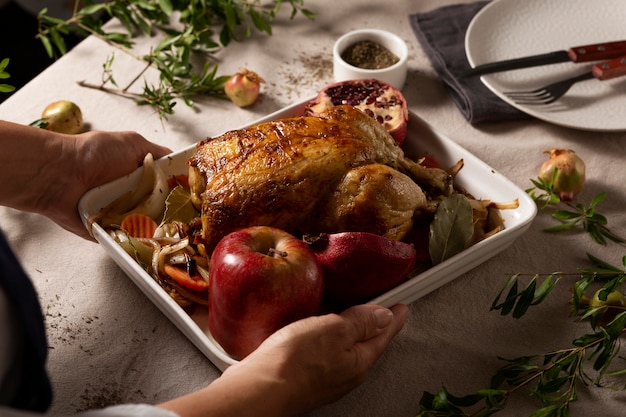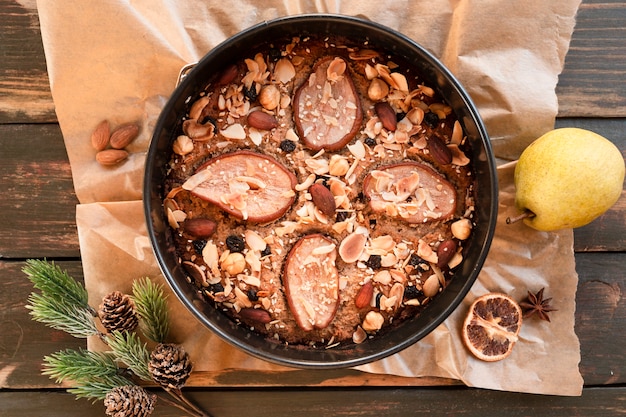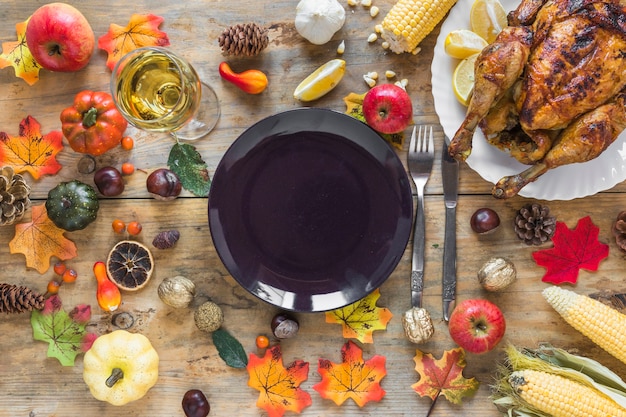Let's face it, the eye round roast can be a bit of a mystery meat. You know it's a good value, but you're also aware it's a lean cut, which can lead to a dry, tough roast if you're not careful. But fear not, my fellow food adventurers! I've been there, done that, and lived to tell the tale (and share some amazing recipes). Over the years, I've learned a thing or two about taming this tough-but-tender cut, and I'm ready to share all my secrets with you.
This isn't your average "how to roast" guide, no sir! We're going deep, diving into the nitty-gritty of choosing the perfect eye round, mastering the art of slow cooking, braising, and even roasting. We'll explore seasoning techniques, discuss the best side dishes, and even cover the finer points of carving and presentation. By the end of this journey, you'll be a pro at transforming this humble cut into a star-studded dish that will impress even the most discerning palate.
So grab your apron, put on your favourite cooking playlist, and let's get started!
(Part 1) Choosing the Perfect Eye Round Roast

The first step to any delicious roast is choosing the right cut of meat. And when it comes to eye round, there are a few key things to look for that will set you up for success.
1. Decoding the Marbling: More Than Just Pretty Streaks
Eye round is naturally lean, meaning it's got less fat compared to other cuts. That's good news for your waistline, but it can be a bit of a challenge when it comes to tenderness. You see, fat acts like a natural moisturizer, keeping the meat juicy during cooking. Too little fat can leave you with a dry, tough roast. So, what's the solution? Look for marbling – those beautiful streaks of fat that run through the muscle. They're not just for looks; they're essential for flavor and tenderness. Aim for a roast with a moderate amount of marbling, a good balance between lean and fatty.
2. Size Matters: Picking the Right Proportions
The size of your roast depends on how many people you're feeding. For a smaller gathering, a 2-3 pound roast will be just right. For a larger crowd, go for a 4-5 pound roast, ensuring everyone gets their share of deliciousness. Don't be shy about asking your butcher for advice; they're experts in their field and are always happy to help you find the perfect size.
3. Your Butcher is Your Best Friend: Ask Away!
Think of your butcher as your trusted guide in the world of meat. They know their stuff, and they're eager to share their knowledge. Don't hesitate to ask them about the origin of the beef, its quality, and even their personal recommendations for cooking methods. They'll be able to steer you towards the perfect eye round for your culinary needs.
(Part 2) The Power of Slow Cooking: Unveiling the Tenderness

Here's the thing about eye round: it's a slow and steady kind of meat. You can't rush it. It's like a marathon, not a sprint. That's why slow cooking is the ultimate secret weapon for achieving a melt-in-your-mouth texture. Whether you're using a slow cooker, an oven, or even the stovetop, the principle remains the same: low heat and plenty of time. Patience, my friend, is key!
1. The slow cooker method: Effortless Flavor and Tenderness
This is my go-to method for eye round. It's incredibly simple, hands-off, and consistently delivers fantastic results.
a. Seasoning: A Flavorful Foundation
Begin by generously seasoning your roast with salt, pepper, and any other spices you love. I find that a touch of garlic powder, onion powder, and paprika adds a beautiful depth of flavor. Don't be afraid to experiment and create your own signature spice blend.
b. The Slow Cook: Patience is Your Ally
Place the seasoned roast in your slow cooker and pour in enough liquid to cover the bottom of the pot. beef broth is my favourite choice, but you can also use water, red wine, or even tomato juice. Set the slow cooker on low and cook for 6-8 hours, or until the roast is fork-tender. You'll know it's ready when you can easily pierce it with a fork. The long, slow cooking process breaks down the tough muscle fibers, resulting in a wonderfully tender and flavorful roast.
c. The Art of Shredding: Transforming Your Roast
Once the roast is cooked through, shred it with two forks. Then, stir the shredded meat back into the cooking liquid. This creates a delicious and hearty gravy that's perfect for ladling over mashed potatoes, creamy polenta, or any other comforting side dish.
2. The oven method: Slow and Steady Wins the Race
Don't have a slow cooker? No problem! You can achieve the same tender and juicy result in your trusty oven.
a. Low and Slow: The Golden Rule of oven roasting
Preheat your oven to 325°F (160°C). Then, place your seasoned roast in a dutch oven or roasting pan. Pour in enough liquid to cover the bottom of the pan, ensuring the roast is completely submerged. Cover the pan with a tight-fitting lid to trap the moisture and help the roast cook evenly.
b. The Waiting Game: Time for Patience and Flavor
Cook the roast for 3-4 hours, or until it's fork-tender. Remember, patience is your friend here. The longer you cook it, the more tender and flavorful it will become.
c. Rest and Rehydration: The Final Touch
Once the roast is cooked, remove it from the oven and let it rest for 10-15 minutes before slicing. This allows the juices to redistribute throughout the meat, resulting in a more flavorful and juicy roast. While the roast is resting, you can skim the excess fat from the cooking liquid and thicken it to make a delicious gravy.
(Part 3) Braising: A Symphony of Flavors and Texture

Braising is another fantastic technique for cooking eye round. It's a beautiful marriage of searing and slow cooking, which brings out the inherent depth of flavor and tenderness in the meat.
1. Searing: Building a Flavorful Crust
Start by searing the roast on all sides over high heat in a Dutch oven or heavy-bottomed pan. This step creates a beautiful, crispy crust and seals in all those delicious juices. You'll be left with a mouthwatering aroma that will have your taste buds singing.
2. The Braising Stage: Creating a flavorful broth
Once the roast is seared, add your favourite braising liquid to the pan. Beef broth is a classic choice, but you can also use red wine, tomato juice, or even beer, for a bolder flavor. Then, add aromatic vegetables like onions, carrots, and celery to the pan. These vegetables will infuse the braising liquid with a beautiful depth of flavor. Bring the liquid to a simmer, cover the pan tightly, and transfer it to a preheated oven (325°F/160°C). Cook for 2-3 hours, or until the roast is fork-tender.
3. The Final Touches: Elevating the Dish
Once the roast is cooked, remove it from the oven and let it rest for 10-15 minutes before slicing. This allows the juices to redistribute, resulting in a juicy and tender roast. Strain the braising liquid through a fine-mesh sieve to remove any solids. Then, thicken the liquid with cornstarch or flour to create a delicious, flavorful gravy. The resulting gravy will be full of flavor, thanks to the combination of the braising liquid and the aromatic vegetables.
(Part 4) Roasting: The Classic Approach
Let's not forget about the classic roasting method. While not as forgiving as slow cooking or braising, with a little care and attention, you can definitely roast a delicious eye round. It's a method that delivers a beautiful, crispy crust and a satisfyingly tender interior.
1. The Right Temperature: The Key to Success
Preheat your oven to 400°F (200°C). Don't be tempted to cook it at a lower temperature; it won't make the roast any more tender. The high heat is essential for creating that lovely, caramelized crust.
2. Seasoning and Roasting: Creating a Flavorful Roast
Season the roast generously with salt, pepper, and any other spices you enjoy. Place it in a roasting pan, ensuring it fits comfortably. Roast for 15-20 minutes per pound, or until a meat thermometer inserted into the thickest part of the roast registers 135°F (57°C) for medium-rare.
3. Rest and Rehydration: Essential for Juiciness
Once the roast is cooked, remove it from the oven and let it rest for 10-15 minutes before carving. This allows the juices to redistribute throughout the meat, resulting in a much more tender and flavorful roast.
(Part 5) The Art of Seasoning: Elevating Flavor to New Heights
Seasoning is more than just adding salt and pepper; it's about transforming your roast into a flavor explosion. A little creativity with herbs and spices can elevate your eye round to a whole new level.
1. The Basics: Salt and Pepper, the Essential Duo
Start with a good salt and pepper rub. I like to use kosher salt for its larger flakes, which dissolve more evenly and provide a more balanced flavour. Freshly ground black pepper adds a wonderful depth and complexity.
2. Spice Blends: A World of Flavor at Your Fingertips
Don't be afraid to experiment with spice blends. Here are a few ideas to get you started:
- Italian Herbs: Rosemary, thyme, oregano, and basil
- French Herbs: Tarragon, parsley, and thyme
- Garlic and Herb: Garlic powder, onion powder, parsley, and thyme
- Cajun Spices: Paprika, cayenne pepper, garlic powder, onion powder, and black pepper
- Smoky Chipotle: Smoked paprika, chipotle powder, cumin, and garlic powder
3. Garlic: A Touch of Magic
A couple of cloves of garlic, minced or crushed, can add a delicious aroma and flavor to your roast. You can also use garlic powder, but fresh garlic is always preferable.
(Part 6) The Best Side Dishes: Complementary Flavor and Texture
No roast is complete without some delicious side dishes to complement the rich flavors of the eye round. Here are a few of my favorite pairings that will elevate your meal to a new level of satisfaction.
1. Starchy Sides: Comforting Classics
- Mashed Potatoes: Creamy and comforting, mashed potatoes are a classic pairing for roast beef. They provide a beautiful contrast in texture and create a warm and satisfying meal.
- Roasted Root Vegetables: Carrots, parsnips, and potatoes roasted with herbs and spices are a delicious and healthy option. The sweetness of the carrots and parsnips complements the savory flavors of the roast, while the roasted potatoes add a delightful crispy texture.
- Polenta: Creamy polenta is a delicious and elegant side dish that complements the richness of the roast. It provides a smooth and creamy texture that contrasts beautifully with the tender, juicy meat.
2. Green Sides: Freshness and Bright Flavors
- roasted asparagus: Tender asparagus spears roasted with olive oil, salt, and pepper are a light and flavorful accompaniment. The asparagus adds a bright, vegetal flavor and a delightful crispy texture to the meal.
- Sautéed green beans: Sautéed green beans with garlic and herbs are a simple and satisfying side dish. They offer a crisp texture and a fresh, earthy flavor that complements the rich roast.
- broccoli salad: A refreshing and crunchy side dish with broccoli florets, shredded cheese, and a creamy dressing. This salad adds a beautiful contrast in texture and provides a bright, tangy flavor that balances the richness of the roast.
3. Other Delights: Elevating the Experience
- Mushroom Gravy: For a rich and earthy flavor, try making a mushroom gravy to go with your roast. The earthy flavor of the mushrooms complements the savory notes of the roast, creating a truly delicious sauce.
- Horseradish Sauce: A classic pairing for roast beef, horseradish sauce adds a pungent kick to the dish. It provides a delightful contrast to the richness of the roast, adding a fresh and exciting flavor dimension.
- Red Wine Reduction: If you braised your roast in red wine, use the remaining liquid to create a rich and flavorful reduction. It's a delicious sauce that will elevate your roast to a whole new level of sophistication.
(Part 7) Serving Your Masterpiece: Presentation Matters
Finally, it's time to serve your delicious roast! Let's make sure it looks as good as it tastes.
1. Carving the Roast: Unlocking Tenderness
Carve the roast against the grain, which means slicing across the muscle fibres. This results in more tender and easier-to-chew slices. Use a sharp carving knife and a cutting board for a clean and professional presentation.
2. Presentation Matters: A Feast for the Eyes
Arrange the carved slices of roast on a platter or serving dish. Garnish with sprigs of fresh herbs, a sprinkle of chopped parsley, or a few slices of lemon for a touch of colour and freshness.
3. The Perfect Accompaniments: A Complete Culinary Experience
Serve your roast with your chosen side dishes and gravy. Enjoy the symphony of flavors and textures that you've carefully created!
(Part 8) FAQs: Your Questions Answered
Here are some frequently asked questions about cooking eye round roast:
1. Can I cook eye round roast in a pressure cooker?
Absolutely! You can cook eye round roast in a pressure cooker for a quicker and equally tender result. Follow the pressure cooker manufacturer’s instructions and cook the roast until tender, typically around 45-60 minutes.
2. What happens if the roast is overcooked?
Overcooking eye round roast can make it tough and dry. If it happens, try slicing it thinly and serving it in a stew or casserole to disguise the texture. The long simmering in the stew or casserole will help to tenderize the meat.
3. Can I freeze eye round roast?
Yes, you can freeze eye round roast for up to 3-4 months. Wrap it tightly in plastic wrap or freezer paper before freezing. Thaw it in the refrigerator overnight before cooking.
4. How do I know if the roast is cooked through?
The best way to determine if your roast is cooked through is by using a meat thermometer. Insert the thermometer into the thickest part of the roast. For medium-rare, the temperature should be 135°F (57°C). For medium, aim for 140°F (60°C). For well-done, cook to 160°F (71°C).
5. Can I cook eye round roast without any liquid?
While it’s not recommended, you can cook eye round roast without any liquid if you’re using the roasting method. However, it’s a risky approach and may result in a dry and tough roast. It’s best to add at least a little bit of liquid to help keep the roast moist and flavorful.
6. What are some other cuts of beef that are similar to eye round?
Other lean cuts of beef that are similar to eye round include top round, bottom round, and chuck roast. These cuts can be cooked using the same methods as eye round and will yield similar results.
7. What are some alternatives to beef broth?
If you don't have beef broth on hand, you can use chicken broth, vegetable broth, water, red wine, or even tomato juice. The liquid will help to keep the roast moist and flavorful during cooking.
There you have it, your ultimate guide to cooking eye round roast! It may seem like a challenging cut, but with these tips and tricks, you'll be turning out juicy and flavorful roasts in no time. Remember, practice makes perfect, so don't be afraid to experiment and find what works best for you. Happy cooking!
Everyone is watching

How to Cook Frozen Lobster Tails Perfectly: A Step-by-Step Guide
RecipesLobster. Just the word conjures up images of lavish meals, special occasions, and a taste of luxury. But let's...

Pigs in a Blanket Cooking Time: How Long to Bake for Perfect Results
RecipesAh, pigs in a blanket. Just the name conjures up images of those delightful little parcels of crispy pastry en...

Pork Fillet Cooking Time: How Long to Cook It Perfectly
RecipesPork fillet, or tenderloin as it's sometimes called, is a real favourite in our house. It's so versatile, and...

The Ultimate Guide to Cooking Delicious Frankfurters
RecipesLet's face it, we all love a good frankfurter. It's a classic, simple, and always satisfying. But let's be rea...

Wolf Meat Recipes: A Guide to Cooking Wild Game
RecipesLet's be honest, you don't see wolf meat at your local butcher shop every day. It's a bit of a wild card, but ...
